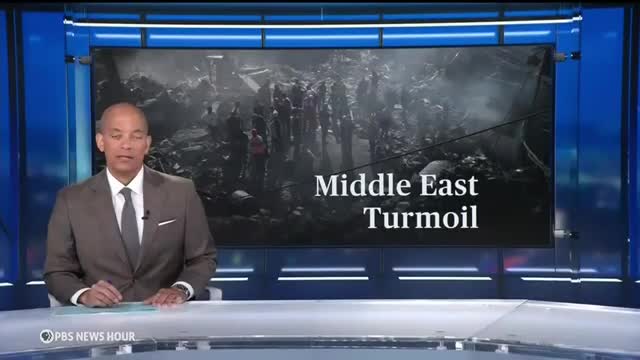Hezbollah leader killed as Israel intensifies airstrikes in Beirut
This article was created by AI summarizing key points discussed. AI makes mistakes, so for full details and context, please refer to the video of the full meeting. Please report any errors so we can fix them. Report an error »

The Israeli military has confirmed the killing of Hashem Safiadine, the man poised to succeed Hezbollah's late leader, in an airstrike in Beirut earlier this month. This strike is part of an escalating conflict between Israel and Hezbollah, which has seen Hezbollah launch at least 80 rockets into northern Israel, resulting in injuries among Israeli civilians.
As the violence intensifies, the humanitarian crisis in Lebanon deepens. Israeli airstrikes have increasingly targeted civilian infrastructure, including healthcare facilities. Reports indicate that an airstrike on the Rafi Karedi hospital in Beirut resulted in the destruction of four buildings and left at least 18 people dead and 60 injured. Rescuers have been working tirelessly to locate survivors amidst the rubble, with many families left in despair as they search for missing loved ones.
The ongoing conflict has taken a severe toll on medical personnel, with over 100 medics reported killed in the past month and at least 50 healthcare facilities targeted. Despite the risks, volunteer medics continue to respond to emergencies, driven by a commitment to save lives. One volunteer recounted the harrowing experience of recovering bodies from a recent bombing, highlighting the emotional and physical toll on those involved in rescue efforts.
The situation has prompted calls from international organizations for stricter regulations on the use of weapons in civilian areas, yet many remain skeptical about the likelihood of significant action from the international community. As the conflict continues, the blurred lines of accountability raise concerns about the protection of civilians and medical workers in war zones.
As the violence intensifies, the humanitarian crisis in Lebanon deepens. Israeli airstrikes have increasingly targeted civilian infrastructure, including healthcare facilities. Reports indicate that an airstrike on the Rafi Karedi hospital in Beirut resulted in the destruction of four buildings and left at least 18 people dead and 60 injured. Rescuers have been working tirelessly to locate survivors amidst the rubble, with many families left in despair as they search for missing loved ones.
The ongoing conflict has taken a severe toll on medical personnel, with over 100 medics reported killed in the past month and at least 50 healthcare facilities targeted. Despite the risks, volunteer medics continue to respond to emergencies, driven by a commitment to save lives. One volunteer recounted the harrowing experience of recovering bodies from a recent bombing, highlighting the emotional and physical toll on those involved in rescue efforts.
The situation has prompted calls from international organizations for stricter regulations on the use of weapons in civilian areas, yet many remain skeptical about the likelihood of significant action from the international community. As the conflict continues, the blurred lines of accountability raise concerns about the protection of civilians and medical workers in war zones.
View full meeting
This article is based on a recent meeting—watch the full video and explore the complete transcript for deeper insights into the discussion.
View full meeting